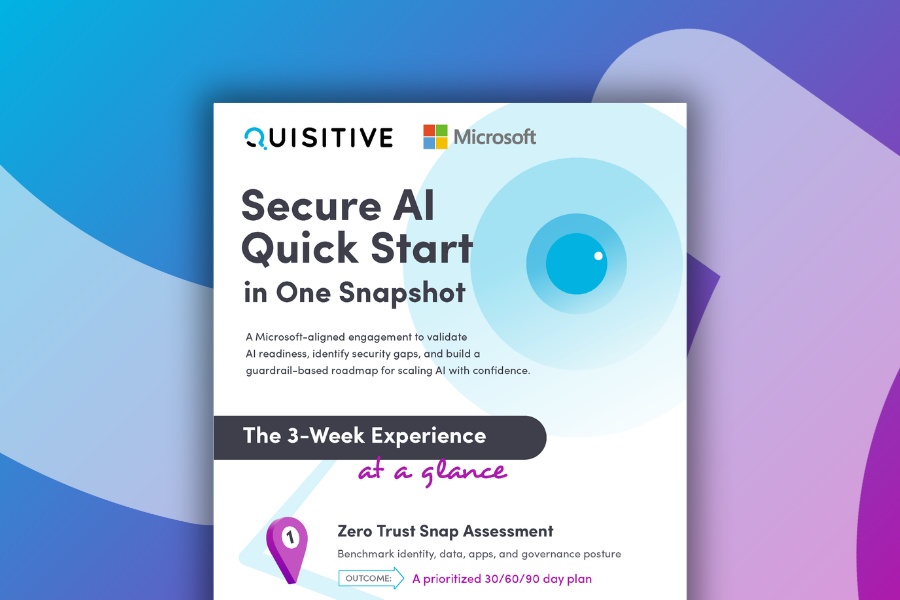The back story of a platform built to scale AI
When it comes to AI adoption, most companies aren’t short on ideas – they’re short on structure.
We sat down with Jimmy Ledbetter, SVP of Strategy at Quisitive, to talk about what’s going wrong with AI at scale, what customers were asking for, and why the team decided to build the Airo AI Workspace.
Q: What was the moment you realized companies needed something different?
Jimmy:
We were working with a mix of large and mid-sized customers, and the pattern was always the same. They’d started AI pilots – maybe ChatGPT in legal, a document assistant in finance – but everything was one-off.
Security teams had no oversight. IT had no control. Every department had their own approach, and none of it scaled. One CIO said, “We’re duct taping LLMs into our workflows and hoping nothing breaks.”
We realized the market didn’t need another AI model. It needed a secure, governed workspace that could help teams operationalize AI responsibly, collaboratively, and without starting from scratch every time.
Q: What makes operationalizing AI so difficult today?
Jimmy:
Three things: fragmentation, governance, and ownership.
People think AI’s hard because the models are complex. They’re not and that part’s maturing fast. What’s hard is stitching together agents, prompts, model access, security, and data into something that runs reliably.
Everyone’s building from scratch. And because it’s new, no one owns it. Is it IT? Is it data? Is it lines of business? That’s where the Airo AI Workspace comes in — it gives all of them a shared environment to build on, with built-in governance and cost control.
Q: So what exactly is the Airo AI Workspace?
Jimmy:
It’s a secure, Azure-based platform that lets organizations design, deploy, and manage AI in production not just as a pilot.
We built it with a few core things in mind:
- It had to run in your own Microsoft environment so you control the data and access.
- It had to support multi-model AI – OpenAI, Claude, Mistral, Meta, you name it — because different jobs need different tools.
- And it had to give business users and developers shared infrastructure. Drag-and-drop for one, full SDK access for the other. Same governance, same dashboard.
Airo is delivered exclusively as part of Quisitive’s AI Operations Services, which means every deployment includes expert guidance, governance, and ongoing support.
It’s what we wish we had when we started helping customers scale AI.
Q: What kind of results are you seeing?
Jimmy:
Teams are deploying agents in weeks instead of quarters and cutting costs by routing tasks to lighter-weight models – Airo allows for 50% faster time to production and a 50% reduction in AI project costs. They’re finally getting visibility into who’s using AI, how it’s being used, and what it’s costing them.
And they’re moving with confidence. No more shadow AI. No more MVPs that never launch. No more wondering if a prompt lives in someone’s notebook.
With Airo, they get a governed workspace, reusable prompts, secure agent access, and real-time cost monitoring – all backed by Quisitive’s AI Operations Services.
Q: What’s your advice for companies just getting serious about AI?
Jimmy:
Don’t treat AI like a side project. It’s a system now. And systems need architecture.
If you want to stop experimenting and start delivering value, you need to think about AI like you think about ERP or CRM: secure, integrated, governed, and built to scale. That’s why we built Airo. It’s not theoretical. It’s what’s needed now.

;)



